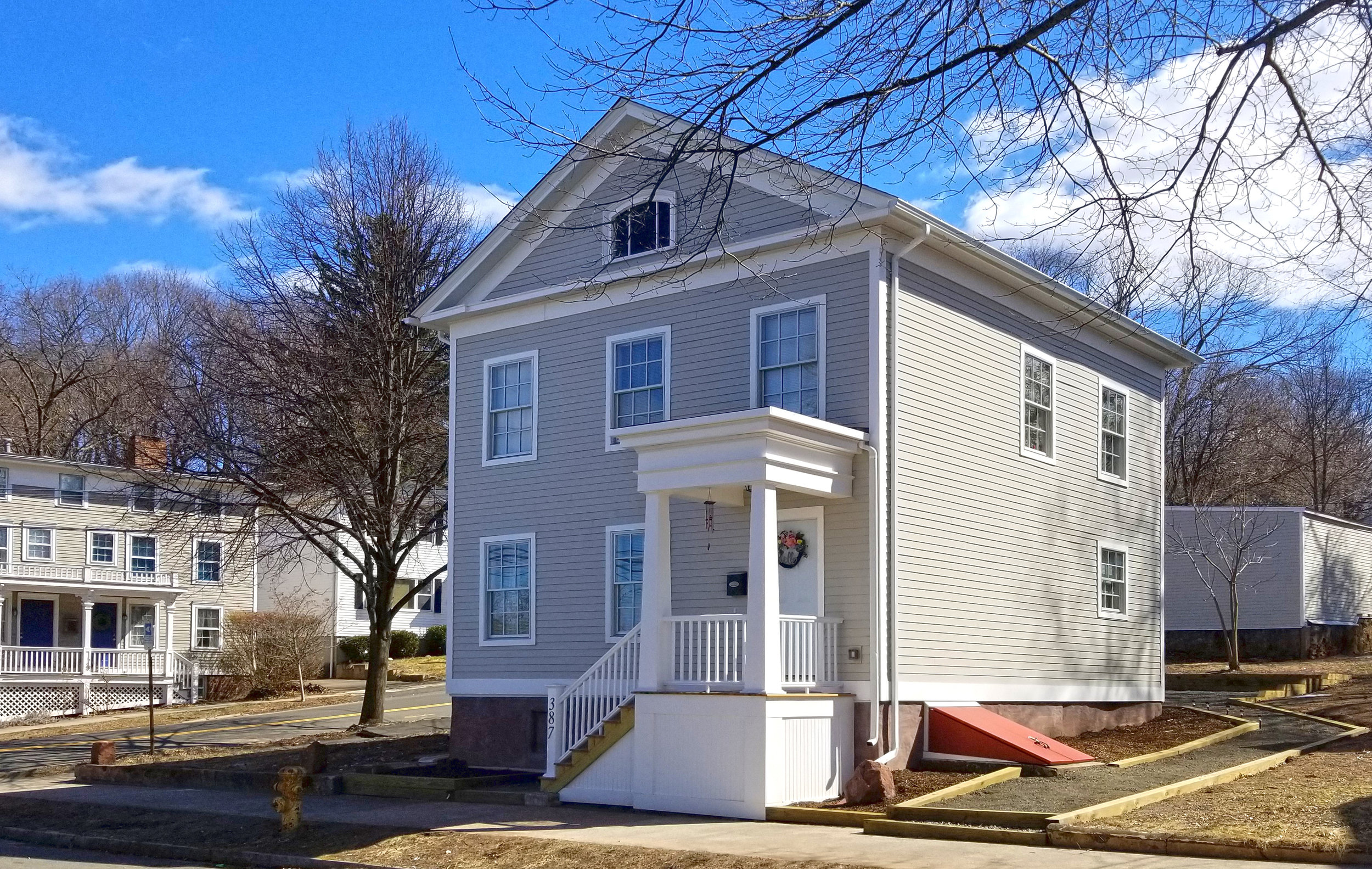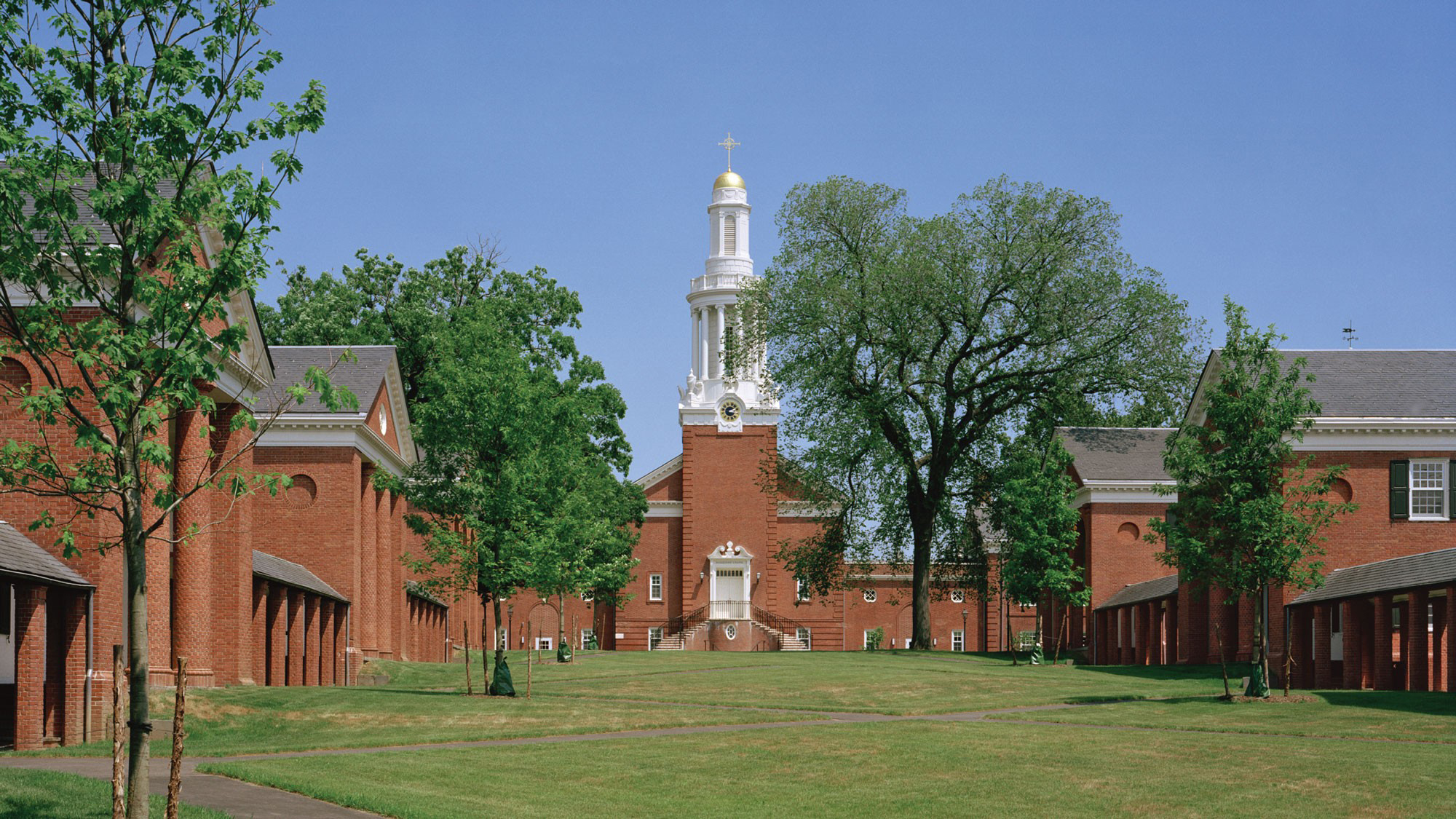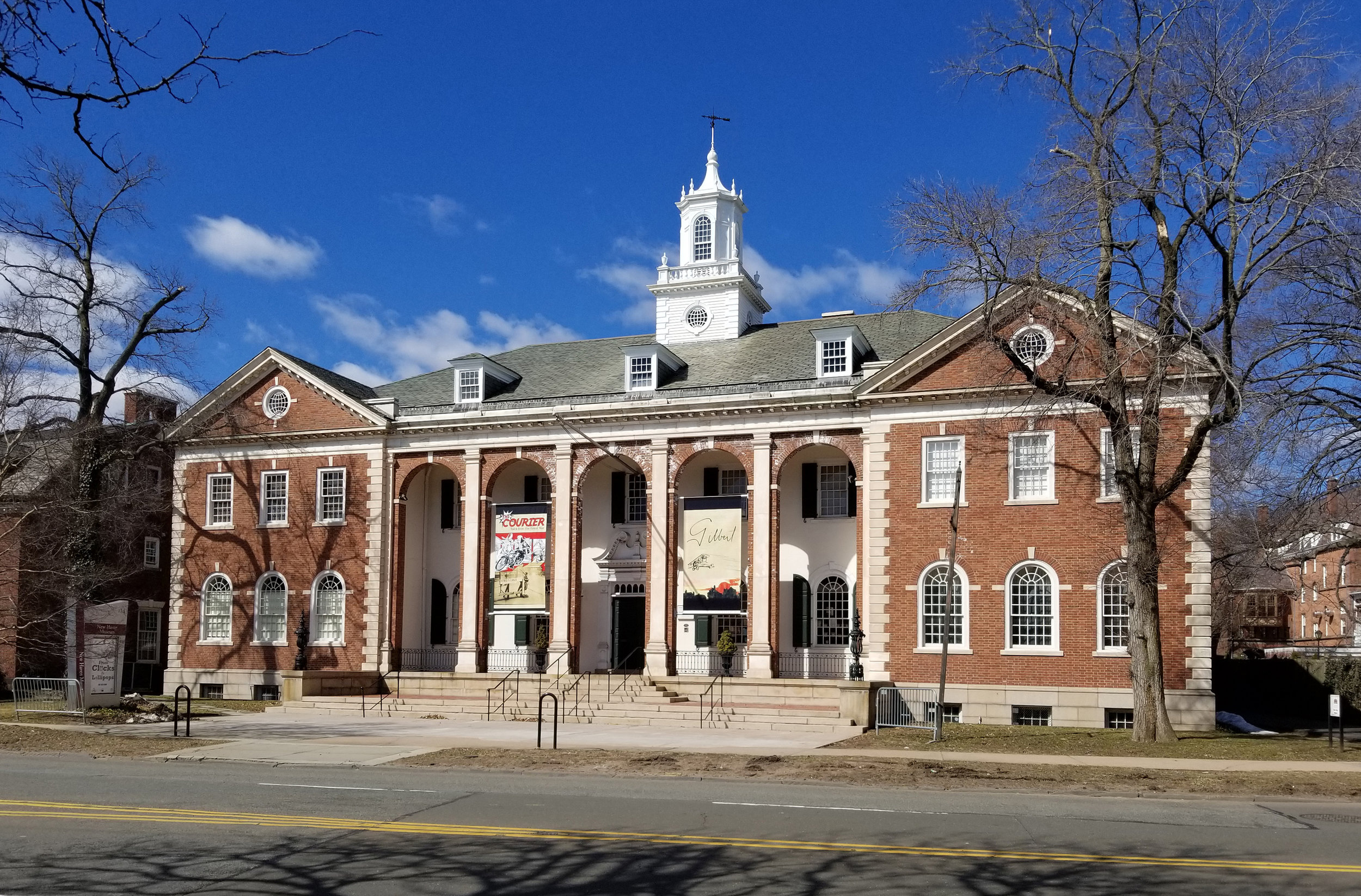
2019 NHPT House Preservation Award
Brown-Foote House
387 Lenox Street
Date: 1833
Contractor: Habitat for Humanity of Greater New Haven
Owners: Ada and Edwin Sanchez
Habitat for Humanity of Greater New Haven saved a house in New Haven — that is not news — while building over 100 new houses, Habitat has also renovated over 40 houses during the last 34 years. The 1833 Brown-Foote home was carefully reconstructed in a full gut/rehab, and made more safe and code compliant. It is also Energy Star efficient. The structure is a classic Fair Haven “oysterman’s house” with a raised full basement. Historic consultant Charlotte Hitchcock worked with volunteer architect Duo Dickinson to create a new entry that was partially funded with an NHPT Historic Structures Fund grant. The rest of the house was completely rebuilt, with most work done by volunteers under the supervision of Habitat’s construction staff. Total costs were twice that of a newly built Habitat home, but well worth the effort in a changing neighborhood. Homeowners Edwin and Ada Sanchez now own their American Dream, in the form of a 2018 rebirth of an 1833 structure. Habitat Executive Director Bill Casey says this house, after a decade of being abandoned and a year’s effort of acquiring the property, manifests that “Preservation is for everyone!”

2019 NHPT Merit Award
Lyric Hall
827 Whalley Avenue
Date: 1913
Owner: John Cavaliere
In 2005, art conservationist John Cavaliere moved his antique restoration business known as Lyric Hall from State Street to Westville. At the time, 827 Whalley Avenue's architectural integrity was so altered that the original nomination of the Westville Village National Register Historic District in 2002 deliberately drew the boundary to exclude it. Closer examination of the structure revealed information regarding the building's original materials and its history as a short-lived theater, and initiated reconsideration. A consultant recommended by the New Haven Preservation Trust submitted a nomination to expand the boundary of Westville Village Historic District. What had been known as the Westville or West Rock Theater held historical and architectural significance consistent with that of the district to which it is immediately adjacent. From 2006–2010, Cavaliere renovated the property and turned it into Lyric Hall, an active community resource used as an antique gallery and performance space, consistent with its original historic function. Over the past decade, 827 Whalley Avenue has served as a visually striking gateway into the historic district, bringing the vitality and character of the past into today’s vibrant Westville Village.
Photo: Jamie Cuzzocreo, H Pearce Commercial Real Estate

2019 NHPT Landmark Award
Yale Divinity School
Sterling Divinity Quadrangle
409 Prospect Street
Architect: Delano & Aldrich
Date: 1932
Renovation and Restoration: Kliment Halsband Architects 2003, 2009
David Thompson Architects 2018
As a tribute to ongoing discernment and determination by faculty and administration of the Yale Divinity School (YDS) regarding the preservation of its Sterling Quadrangle, the New Haven Preservation Trust bestows its Landmark Award. Exemplary buildings over the breadth and depth of history inspire and deserve preservation. Indeed, in 1996, Vincent Scully, Yale’s beloved and renown professor of architectural history, quickly responded to the University’s proposal to radically truncate the east end of the YDS quadrangle. Ever since his call to rethinking the issue, YDS has been and continues to be committed to the challenge of preservation and in so doing provides an ever more perfect fit for the School’s expanding and all-embracing curriculum and its encouragement of stewardship.
Photo: Yale Divinity School

2019 Certificate of Recognition
New Haven Museum
114 Whitney Avenue
Architect: J. Frederick Kelly
Date: 1930
Renovation: Gregg Wies & Gardner LLC 2011
The Certificate of Recognition is awarded to the New Haven Museum as an expression of appreciation to an organization which has furthered the goals of historic preservation, both by promoting preservation in the community and for the exemplary restoration of their unique 1930 Colonial Revival building.
The Museum has served for over 15 decades as an outstanding resource, preserving and exhibiting countless local treasures including collections of architectural documents, photographs, and even diaries of New Haven’s built environment and its integral social history. But more than just managing a repository, the museum’s curators, staff, and member-scholars provide in-depth research and interpretive programs, and have written and published extensively to share this heritage.
Also, for the past eight years they have undertaken an extensive restoration of their 90-year-old, Colonial Revival-style building. This structure itself is instructive, both in its purposeful function and as an important example of the period. New Haven architect J. Frederick Kelly (1888–1947) thoughtfully composed elements into a balanced sequence of volumes with elegant details.
The ongoing renovation was carefully planned and includes repairs and conservation of walls, ceilings and roof, complex sash windows, crystal chandeliers, granite front steps, and the wrought iron front urns. Restoration has followed the Secretary of the Interior’s “Standards for the Treatment of Historic Properties” and was funded in part by the 1772 Foundation, the Richard English Fund and individual donors, with institutional support from the Howard Gilman Foundation.




